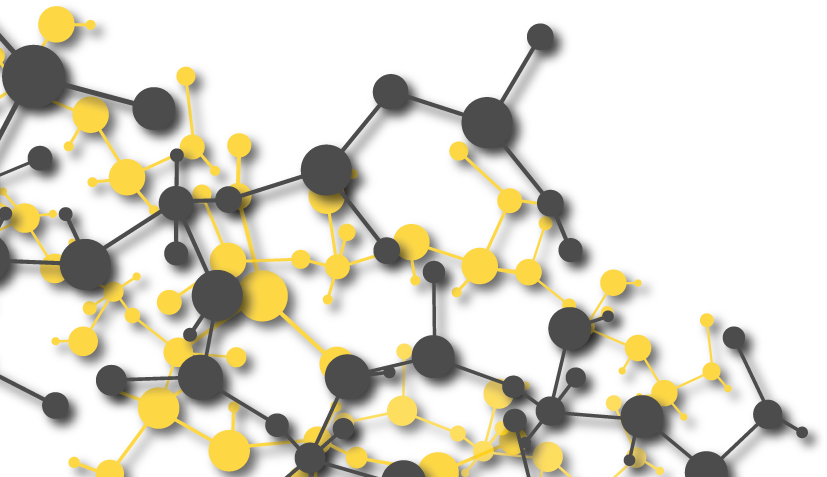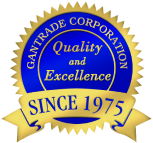Vinyl acrylic binders and resins are economical products that find extensive usage in interior architectural paints and caulks, adhesives and sealants, paper and textile binders, paper saturants, engineered fabrics, and pigment dispersions. With the unlimited variability in monomer options and copolymer ratios, vinyl acetate-acrylic copolymer binders allow the design of products with a wide spectrum of cost and performance profiles. The role of the binder resin is to bind the pigments into a tough, continuous film and to promote the adhesion to the substrate surface while resisting wear and blistering etc. Vinyl acetate monomer achieves cohesive strength in a binder at a low cost, while acrylic monomers like butyl and 2-ethylhexyl acrylates enhance the performance of copolymers by improving flexibility, water resistance, adhesion, scrub, and stain resistance and outdoor weathering.
Paints and coatings is the most significant market for the vinyl acrylic resins, followed by adhesives and sealants. Architectural coatings, used in residential and commercial buildings, is the largest of the coatings segments, with vinyl acrylics taking over 50 percent of this market. Vinyl acrylic-based products are largely confined to interior architectural applications due to reduced performance on exposure to UV (sun) light and outdoor weathering. Still, vinyl acrylic binders have an about 35 percent total share of the overall architectural coatings market volume. This high market performance is due to the fact that interior paint products represent about 65 percent of the total volumes of architectural coatings. Vinyl acrylics are selected by professional contractors since they are the more economical product in the interiors segment.
The market shares by volume of the segments within the coatings industry are shown in the chart below. Interior architectural paints is the segment dominated by vinyl acrylic products.
Vinyl Acrylic versus All-Acrylic Emulsion Coatings
All-acrylic binders are the standard for durability in architectural paints and coatings. Durability is defined as the retention of gloss, color and substrate adhesion, resistance to chalking, blistering, weathering and staining, and protection against dirt accumulation. In exterior applications, vinyl acrylic coatings lack durability and show wear after about three years of outdoor exposure. All-acrylic paints exhibit superior durability and can last up to ten years.
In interior applications where the outdoor elements are absent, vinyl acrylic binders exhibit the durability of all-acrylic systems. These durability attributes include gloss and tint retention and scrub resistance. Hence, formulators can take advantage of the lower costs associated with incorporating vinyl acetate monomer in interior paint binder formulations. Vinyl acrylic copolymers are generally produced over various VAM/BA/GAA composition ranges.
Vinyl acrylic binder chemistries should be avoided with alkaline substrates such as masonry materials like concrete, cinder blocks, mortars, and stuccos. This is because a basic environment leads to hydrolysis of the acetate moieties within the backbone chemistry, causing a decline in the performance of the vinyl acrylic binder resin. Moisture within these substrates further promotes hydrolysis, the combination of which is referred to as “alkali burn.” The ester moieties within all acrylic binders are much more resistant to hydrolysis on a cementitious substrate.
Vinyl Acrylic Adhesives
Vinyl acetate polymers, such as PVA and EVA resins, comprise the largest segment of the adhesives market. The next step up in pricing and performance are the vinyl acrylics. Vinyl acrylic adhesives have a strong market share in pressure-sensitive tapes, labels, decals and envelopes applications. They function well in both removable and permanent pressure sensitive adhesives. A variety of low-Tg acrylic monomers are used with vinyl acetate monomer to achieve the required balance of performance properties such as tack, peel and shear strength. Vinyl acetate monomer increases the cohesive strength of the adhesive. In removable PSA applications, vinyl acrylics can be readily designed with the necessary balance of tack and adhesive-cohesive strength. For permanent pressure-sensitive adhesive applications, vinyl acrylics can be formulated with the desired levels of tack and peel strength, and mechanical properties. Vinyl acrylic adhesives, usually in an emulsion format, are used to adhere a wide variety of substrates including plastics, wood, glass, ceramics, and metals.
Vinyl Neodecanoate-Modified Vinyl Acrylics
The performance of vinyl acrylic polymers can be dramatically enhanced by the incorporation of a specialty hydrophobic monomer, vinyl neodecanoate. This monomer is marketed by Gantrade under the trade name Shivena 10. The C10 branched neodecanoic vinyl ester contributes hydrophobic character and also allows chain entanglement of the pendant C10 side-chain increasing cohesive properties.

The incorporation of vinyl neodecanoate significantly improves durability, hydrolytic and alkali stability, chemical and corrosion resistance, water and UV resistance and adhesive shear strength. While vinyl neodecanoate is a higher cost monomer, modification of an acrylic system allows the incorporation of low-cost vinyl acetate monomer to improve competitive economics without a significant loss in performance. The property enhancements associated with vinyl neodecanoate-VAM-acrylate terpolymers meet requirements in a wide range of highly demanding applications. End-use applications where vinyl neodecanoate is used include emulsion copolymers for industrial, architectural and automotive coatings, water repellent systems, construction adhesives, cementitious additives and powder coatings.
Vinyl Acrylics Copolymer Design
When it comes to monomers for the design of vinyl acrylic polymers, Gantrade offers a wide range of options. Co-monomer feeds can include the following:
● Butyl acrylate (BA)● 2-Ethylhexyl acrylate (2-EHA)
● Vinyl acetate monomer (VAM)
● Glacial acrylic acid (GAA)
● Vinyl neodecanoate (VND)
The monomer composition is often dictated by the desired Tg (glass transition temperature) of the polymer film, from -30 °C to > 30 °C. Please see the reference Tg values of several key monomers provided below. For PSA adhesives where a low polymer Tg is desired, soft monomer contents of 80 percent are used, with about 15 percent VAM for cohesive strength and three percent GAA.

Gantrade Product Lines
Gantrade is a premier marketer of monomers, intermediates, and polymers for the emulsion polymers, acrylics, and vinyl acrylics industry. Worldwide, Gantrade’s product line of vinyl and acrylic monomers includes the following:
Vinyl Acrylic Raw Materials |
| Butyl Acrylate (BA) |
| Butyl Methacrylate (BMA) |
| Diacetone Acrylamide (DAAM) - crosslinking monomer with our ADH |
| Ethyl Acrylate (EA) |
| Glacial Acrylic Acid (GAA) |
| Methyl Acrylate (MA) |
| Methyl Methacrylate (MAA) |
| Methyl Methacrylate (MMA) |
| Vinyl Acetate Monomer (VAM) |
| Vinyl Neodecanoate (Shivena 10) |
Gantrade has also teamed up with Tiarco RST to offer a broad portfolio of rheology modifiers, surfactants, dispersants, and related products that help to advance performance dimensions in emulsion-based paints and coatings, adhesives and sealants, inks, and related products. With over four decades in the rheology and surfactants industry, Tiarco-RST offers a wealth of experience, capabilities and leading-edge products that can help to create products with distinctive performance advantages. Our combined capabilities are always available to assist customers with formulation challenges and to tailor new products that can offer distinctive performance advantages.
Whatever your specialty requirements, Gantrade welcomes the opportunity to work jointly to enhance the performance of your products.
















